Physicians who practice Complementary Alternative Medicine talk of and write endlessly about oxidative metabolism. Our present approach is, however, largely shot-gun in character. That is a reflection of our collective ignorance, but the question arises as to whether the application of non-caloric nutrients (vitamins and minerals) is an appropriate methodology in the treatment of virtually any disease, the model on which a great part of Complementary Alternative Medicine (CAM) is founded. Is it truly a paradigm shift in overall concept? We certainly know that it usually, if not always, works. We have a huge amount of information about vitamins and minerals, but still do not know how to balance them. In spite of the general impression that modern medicine is a scientific bonanza I see myself standing on the “beach of knowledge, looking at the ocean of ignorance”
Over the years I have provided my patients with a model that introduces them to the concept of oxidative metabolism in a very simple way and this essay is to describe it. It also provides an intuitive concept of how stress is converted into disease.
The Three Circles of Health: Genetics, Stress and Fuel
The three circles of health presented below are derived from Boolean algebra that seeks to describe the influence of variables by the degree of overlap between them. Genetics, for most of us an unknown factor, always enters the equation, since we are born of parents. With a strong Mendelian defect it may be the unavoidable factor, but the discovery of epigenetics tells us that even this can be modified for benefit since it is the study of how nutrients and lifestyle influence our genes. Cystic fibrosis, an example of a genetically determined disease, can be helped by nutritional implementation. That represents the overlap between the genetics and fuel circles.
Figure 1. The Three Circles of Health
Stress, poorly defined for medical purposes, is defined here as a “mental” or “physical” force imposed by living in an essentially hostile environment. It includes all the variables of mental and physical forces to which we have to adapt as we encounter them daily throughout life. Unless the force, whatever that may be, is overwhelming as in any lethal mechanism imposed, it is not the stress that is the problem. It is how we adapt or maladapt to it that is the problem. The fuel circle is our nutrition.
Let us take a simple analogy. Imagine that you have bought a car. You do not know it, but somewhere in the structure of that car there is a weakness, perhaps a flaw in the engine. As it ages it is being “stressed”, particularly by the hills that it has to climb. One day it breaks down on a hill and when you receive the bill for repairs you are told that the breakdown occurred at the site of the structural weakness. Do you blame the hill or the structural defect, about which you were ignorant? Obviously you can blame neither. The hill was a part of the journey undertaken. But suppose that you never bothered to read the owner’s manual and you have been putting in a fuel that is not consistent with the engine design. If and when the breakdown occurs, it is only the fuel that can be blamed since it created less efficiency in the function of the engine, imposing a greater liability for breakdown. The body has exactly the same problems in principle. This becomes an easily understood concept of how stress is converted into disease, the equivalent of breakdown.
Oxidative Metabolism: Understanding the Fuel
The next part of the model depends on understanding that efficiency in a fuel-burning machine, including the 70 to 100 trillion cells that make up the human body, is defined as the useful work produced by the machine in proportion to its fuel consumption. A car is said to be about 35% efficient, meaning that 65% of the energy produced from burning gasoline is wasted in friction and noise. The body is estimated to be 75% efficient, a very different story.
Figure 2. Oxidative Metabolism
Lack of oxygen (anoxia) is lethal as we all know, but it is not usually known by many as being lethal in excess. Every diver knows this. Thus, in this simple figure, efficiency is plotted against the volume of oxygen being consumed. This volume will be less at rest and will increase in proportion to the mental or physical exertions of the individual. On the left side of Figure 2, oxidants are the equivalent of spark plugs in a car. On the right, antioxidants are the equivalent of the cylinders since they represent the “firewall” that enables the energy to be controlled.
Let us turn to another analogy. Imagine that a camper wishes to light a fire in a clearing in the forest. He risks setting the forest on fire so he puts his fire in a fireplace. But as the fire becomes more flagrant it begins to throw off sparks that also endanger the forest. The camper places a wire grill over the fire in order to catch the sparks and thus protect the forest. Now he wants the fire to burn as fast as possible.
The body has the same problems to solve. Every cell has to create its energy by literally burning fuel. This is called oxidation and it is carefully controlled in “fireplaces” in the cell, known as mitochondria. When we are at rest we use less oxygen and when we exercise physically or mentally we use more. As long as we keep it in the bounds that are represented in Figure 2 by the vertical lines, we maintain efficiency. On the left of the Figure we see the oxidants or “spark plugs” and on the right we see the antioxidants, the equivalent of the wire screen in the Figure. It is to be emphasized that the wire screen is an important analogy because it is only effective because of the multiple wires. None of them can catch the sparks on their own.
Mother Nature knew that these “sparks”, known as free oxygen species, would form under any form of stress and took steps to put together a series of chemicals that all work together like the wire screen in the analogy. It is therefore important to understand that antioxidants only work as a team and any one of them alone does not provide metabolic safety. Nor can we ask whether, for example, vitamin C is “good for any particular disease” in the same way that we might ask whether aspirin is good for headaches. The nutrient scenario is completely different from that of the pharmaceutical treatment method.
The Cathedral Roof
We can now imagine that the oxidants form one half of an imaginary roof and the antioxidants the other half. They must balance just like an architect would design a roof. The whole roof or part of it might fall in or the roof could sway one way or the other. Like all analogies, this is an incomplete representation, but it does provide a basis for understanding the problems facing us in what might be called “repairing the roof”.
Brain Body Relationship
Figure 3, shown below, is an obvious oversimplification but introduces the concept that we have two parts to the brain.
Figure 3. The Brain Body Relationships
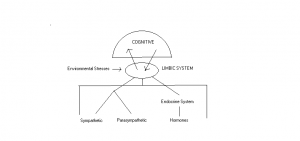 The “cognitive” part does the thinking whereas the limbic system is clearly a very complex computer that continuously senses the state of our personal environment. It is responsible for all our survival mechanisms that include the fight-or-flight reflex, and vital components of species survival such as appetite, thirst and basic sex drive. I think of the body as like an orchestra where the organs are like banks of instruments and the cells within them are the various instrumentalists. The limbic system is the “conductor”. The conduct of our daily lives depends on the conductor’s ability to play the “symphony of health”. The two parts of the brain “talk” to each other to modify our behavior. The computer “talks” to the various organs in the body through a balanced activity of the sympathetic and parasympathetic branches of the autonomic nervous system. This system is involuntary and is automated by the limbic system. The computer also controls the glands that make up the endocrine system by a closed biofeedback mechanism. Hormones are really messengers of the conductor’s ability to communicate with the organs. The organs even “talk” to each other.
The “cognitive” part does the thinking whereas the limbic system is clearly a very complex computer that continuously senses the state of our personal environment. It is responsible for all our survival mechanisms that include the fight-or-flight reflex, and vital components of species survival such as appetite, thirst and basic sex drive. I think of the body as like an orchestra where the organs are like banks of instruments and the cells within them are the various instrumentalists. The limbic system is the “conductor”. The conduct of our daily lives depends on the conductor’s ability to play the “symphony of health”. The two parts of the brain “talk” to each other to modify our behavior. The computer “talks” to the various organs in the body through a balanced activity of the sympathetic and parasympathetic branches of the autonomic nervous system. This system is involuntary and is automated by the limbic system. The computer also controls the glands that make up the endocrine system by a closed biofeedback mechanism. Hormones are really messengers of the conductor’s ability to communicate with the organs. The organs even “talk” to each other.
Oxygen, Nutrition and Health
The last part of this model depends on the tissues in the body that are most dependent on oxygen. Brain is well known to be number one in this requirement, particularly the part known as the limbic system and the brainstem, since they function all the time throughout life. The heart also works full time and is perhaps next on the list. It possibly explains why the ancient scourge of beriberi, due mainly to the vital relationship between vitamin B1 deficiency and ingestion of simple carbohydrate is a disease of the heart, brain and nervous system. Beriberi is still seen in the cultures where rice is the staple diet. It was (and still is) caused by the use of white rice that is produced by milling off the grain cusps that contain vitamin B1 and its “spark plug” colleagues. The excess calories cannot be “burned” (oxidized) efficiently. Many of us can remember that we had a mechanism in cars called a choke. If that mechanism stuck after starting the car from cold, the engine would splutter and the car would hesitate. Black smoke from the exhaust represented unburned hydrocarbons. That is what happens to many people in our modern world who insist on the pleasure derived from eating masses of sweets and simple carbohydrates. They are never able to understand that their many symptoms, usually written off by physicians as psychosomatic, are due to their “junk”. Like white rice, “junk” is defined as a substance that we eat that contains no “spark plugs”. This gives rise to the term “empty calories”. Notice that I used the word “substance” rather than “food”.
The extremely common result of all this is a condition that I have called Functional Dysautonomia. Although published in medical journals, it is not a term that you will find in a medical textbook. It is, however, perhaps the commonest condition in Western civilization since the diet of the masses is frequently appalling. I refer to it as High Calorie Malnutrition and the early stages of the decline that results produces symptoms that are usually diagnosed as “psychosomatic”. In a crazy world, two thirds of the human population are dying from the results of increasing starvation, while one third are suffering disease and decay from overeating the wrong foods.
The Three Circles of Health Revisited: Genetics, Fitness and Nutrition
To summarize, there are only three things that you need to remember in maintaining health. The first is that genetics represents a blueprint given to us by our parents. The second is that “stress” is an inevitable result of living in the world. Injury, infection, toxic substances and business decisions all make up forms of physical and mental “stress”. Stress, if not in itself overwhelming, is less important than the way we adapt to it. The third thing and probably the most important is the way we choose our nutrition. Each of the circles represented in Figure 1 above is dependent on the interplay with the other two circles. Each circle may be the dominant cause of an illness but the other two circles come into the equation. The new science of epigenetics has shown us that nutrition and lifestyle have a direct and important effect on our genetic predisposition. The way we adapt to various forms of stress is by physical and mental fitness, maintained by exercise and nutrition, both of which demand self-responsibility.

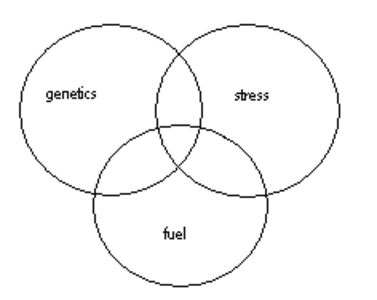
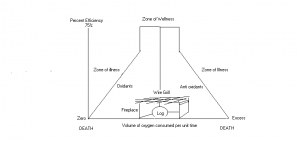


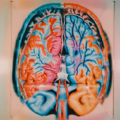


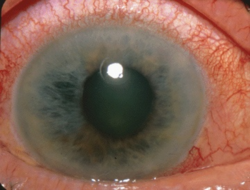








On New Integrative Medicine Book
Dear Dr. Derrick Lonsdale
I know you are a very busy person. So I will be brief in my message.
I’m Luiz Azevedo, 58, live in Blumenau – Brazil. I’m releasing the book “Atitudes Pessoais de Cura: Os 25 melhores hábitos de vida para mais saúde, bem estar, qualidade de vida e longevidade (Personal Healing Attitudes: The 25 best life habits for health, wellness, life quality and longevity)”. The book guides to good health, self-talk, dealing with emotions, forgiveness, love, the power of thought, mind-body and spirit healing, metaphysics medicine and so on. The lauch will be in the next month in my hometown, in Brazil.
The whole above mentioned Book Review and Chapters 1, 2, 3, 9, 10, 11, 13, 21, 22, 23, 24, and 25 ( all in english)
are avaliable in this link:
https://pt.scribd.com/doc/281451089/In-English-Book-Review-and-Chapters-Content?secret_password=NcbcFaRMxOr2DmNzSsoi
And if you want to read another (not mentioned) specific chapter translated in english, please let me know.
I’ll be happy to provide and send it translated to you.
The full book content (in portuguese) is available in this link:
https://pt.scribd.com/doc/279775382/APC-LA?secret_password=nZANtdSLRF9ucHth8Gfn
So, and now I’m asking you to please help this dedicated, for six years researcher and author, writing a short endorsement, a blurb or a few words in praise of his book to let people know what you think of the book’s content. Please send your written text in later than September 25 to my email adress as follows: luiz.azevedo@email.com.
I am a regular reader and great admirer of your books. They helped me a lot in my personal, profissional and spiritual growth. Your ideas, lines of research and teachings are extraordinary. So I suggested some of them as reading recommendations at the end of some chapters of my book.
Waiting for your answer, thank you very much for your special attention, in advance.
Luiz da Silva Azevedo, from Blumenau-SC, Brazil.
Further information on myself:
Facebook: https://www.facebook.com/LuizdaSilvaAzevedo
email: luiz.azevedo@email.com
Phone: 55 47 9608 3565